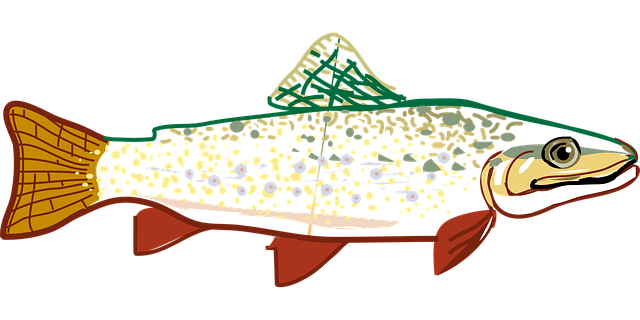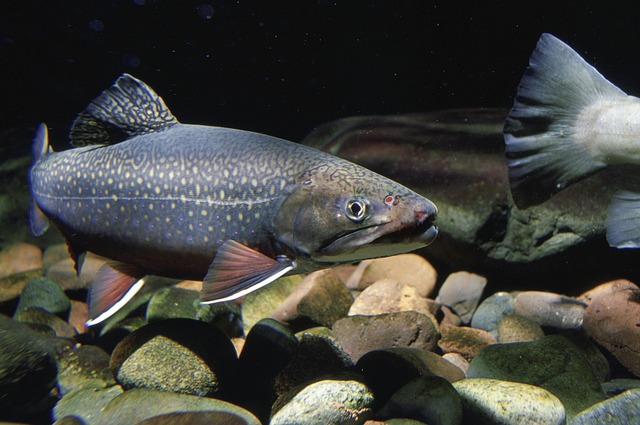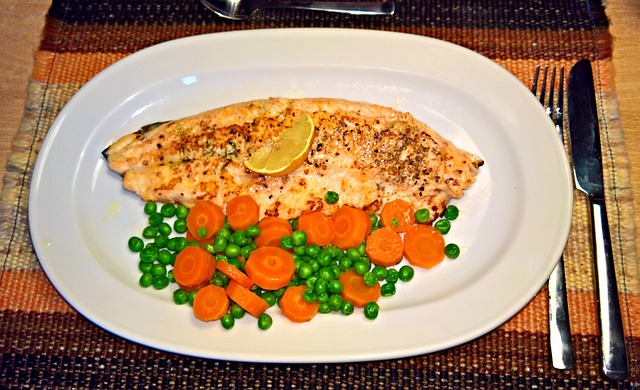Selecting the right fishing line (fluorocarbon for invisibility, monofilament for sensitivity) and matching it to rod rating is crucial. Use appropriate hooks and tied flies imitating local insects. Master casting techniques adjusted to water conditions. Secure spots with structures like rocks or logs. Understand trout behavior and feeding habits for effective presentations near cover, using live bait.
Unleash your inner angler with our comprehensive guide on trout fishing! Discover the secrets to setting up your rod like a pro. From selecting the ideal rod and reel combination to choosing the right line for trout, we’ve got you covered. Learn how to tie on lures or flies effortlessly and master the art of adjusting your cast. Plus, find the best spots and uncover trout behavior tips to increase your chances of a catch. Elevate your trout fishing tips and head to the river with confidence!
- Choosing the Right Rod and Reel Combination
- Selecting the Suitable Line for Trout
- Tying On the Perfect Lure or Fly
- Adjusting Your Cast and Presentation
- Locating Ideal Trout Fishing Spots
- Understanding Trout Behavior for Better Catches
Choosing the Right Rod and Reel Combination

When it comes to trout fishing, choosing the right rod and reel combination is a crucial step in enhancing your overall experience. The ideal setup depends on several factors, including the type of trout you’re targeting, the water conditions, and your personal preference. For most trout anglers, a versatile spinning or casting rod between 6 and 9 feet in length is an excellent choice. These rods offer a balance between power and precision, allowing you to cast lures effectively while still being able to handle the typically stronger strikes from trout.
Reel selection should complement your rod choice. A size 2000-3000 spinning reel is commonly recommended for trout fishing. Look for reels with good line capacity, smooth drag systems, and lightweight construction to ensure you can cast your lines efficiently and make precise retrieves. Remember, the right rod and reel combination will not only improve your casting accuracy but also increase your chances of reeling in a memorable trout catch.
Selecting the Suitable Line for Trout

When setting up your rod for trout fishing, selecting the suitable line is a crucial step. The choice depends on several factors, including the type of trout you’re targeting, the water conditions, and your casting style. For most freshwater trout fishing scenarios, consider using a fluorocarbon or monofilament line. Fluorocarbon lines offer excellent invisibility under water, making them ideal for tricking wary fish. Monofilament lines, on the other hand, are more affordable and suitable for lighter tackle, providing better sensitivity to detect even the subtlest bites.
When it comes to trout fishing tips, remember that line weight should match your rod’s rating. A 6-to-8-pound test is a good starting point for most trout rods. Lighter lines allow for more delicate presentations and enable you to feel the fish better, while heavier lines offer greater casting distance and strength when dealing with larger trout or stronger currents. Tailor your line choice according to these considerations to enhance your overall fishing experience.
Tying On the Perfect Lure or Fly

When it comes to trout fishing, the right lure or fly can make all the difference. Start by choosing a hook that matches the size and type of bait you’re using, ensuring a secure fit. The line should be sturdy enough to fight strong trout while remaining sensitive to detect their delicate bites.
For fly fishing, select a fly that imitates local insects. Tie it on securely with a tight knot, adjusting the tension to ensure it doesn’t slip. Practice your tying skills and experiment with different materials to create flies that match the habitat and season. These precise steps will enhance your trout fishing tips and increase your chances of a successful catch.
Adjusting Your Cast and Presentation

Mastering the art of casting is a crucial aspect of successful trout fishing. After setting up your rod and reel, practice different casting techniques to find what works best for various water conditions. The goal is to place your bait or lure gently on the water’s surface, mimicking the natural behavior of prey to attract trout.
Adjusting your cast involves understanding the current and the target area. For instance, a sidearm cast might be more effective in gentle currents, allowing you to present the bait precisely without it drifting away. In contrast, a full overhead cast is suitable for still waters or stronger currents, covering a larger area and increasing your chances of attracting a curious trout. Trout fishing tips often emphasize the importance of presenting your catch in a natural, enticing manner to increase your success rate.
Locating Ideal Trout Fishing Spots

When it comes to trout fishing, finding the right spots is half the battle won. The first step in your trout fishing journey involves understanding where these elusive creatures tend to congregate. Look for cool, clear water as trout are often found in rivers and streams with these characteristics. These bodies of water provide a safe haven from predators and offer ample oxygen supply, which is essential for their survival. Pay attention to the surroundings too; trout frequently gather near underwater structures like rocks, logs, or fallen trees that provide both shelter and food opportunities.
Trout fishing tips often emphasize the importance of understanding current and upstream/downstream movement patterns. Trout tend to feed in deeper pools and then move upstream during their hunting forays, so locating these pathways can significantly improve your chances of a successful catch. Remember, local knowledge and asking experienced anglers about popular trout fishing spots in your area are excellent ways to gain insights into where to set up your rod and reel for an enjoyable day on the water.
Understanding Trout Behavior for Better Catches

Trout, known for their agility and cunning, offer a unique challenge to anglers. Understanding their behavior is crucial for successful trout fishing tips. These fish are highly sensitive to their environment, preferring cooler waters and shady areas during the warmer months. They feed on smaller creatures like insects, small baitfish, and even smaller trout, making them selective in their prey choices.
Knowing these habits, anglers can employ effective strategies. Casting near structures like rocks or trees that provide cover is a good start. Observing the water for rising bubbles indicating feeding trout, or using live bait imitating their preferred food sources, can also significantly improve catch rates. Trout fishing tips often emphasize patience and subtle presentations to entice these wise fish.
Setting up your rod for trout fishing is a combination of art and science, requiring the right equipment and an understanding of local trout behavior. By choosing the ideal rod and reel combination, selecting suitable line for trout, tying on effective lures or flies, mastering cast adjustments, and locating prime fishing spots, you’ll be well-equipped to enjoy successful days on the water. Incorporating these essential trout fishing tips will enhance your experience and increase your chances of landing that coveted trout.



